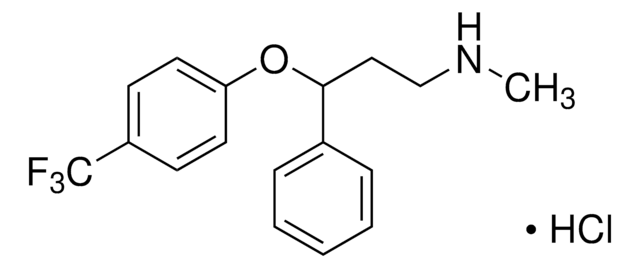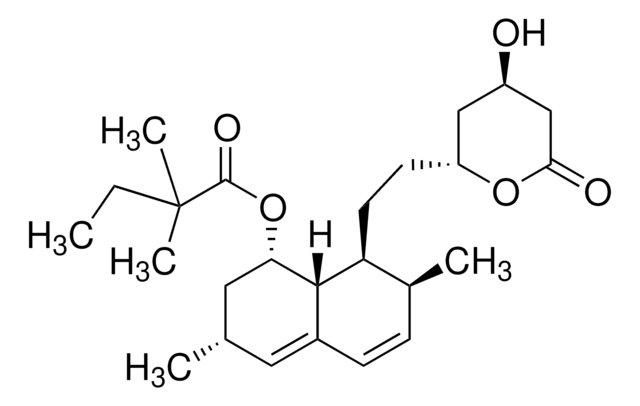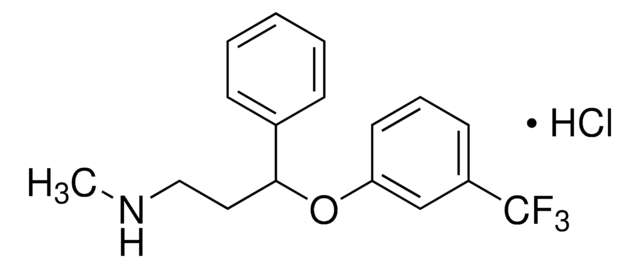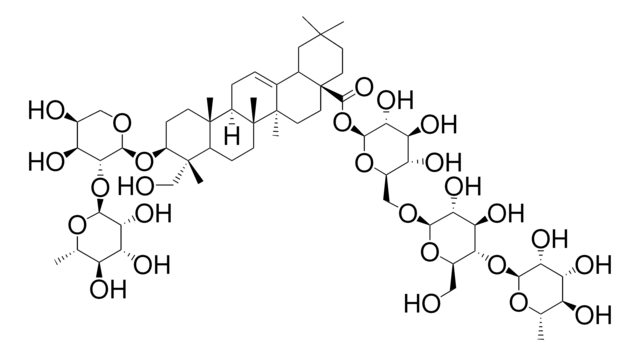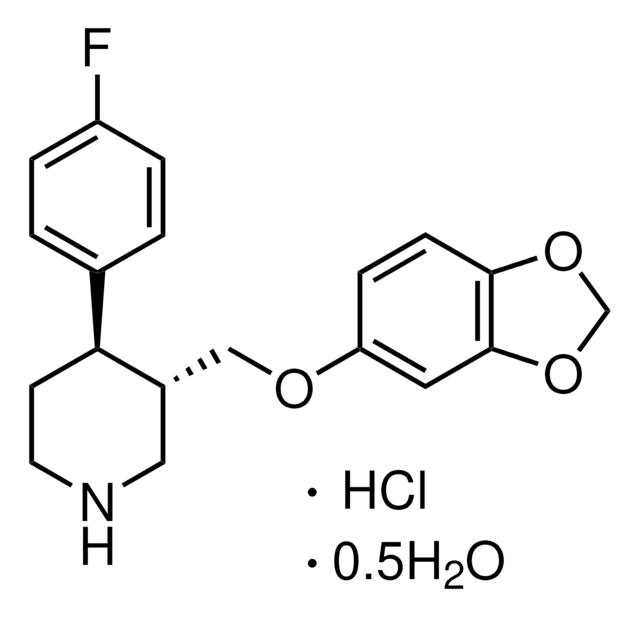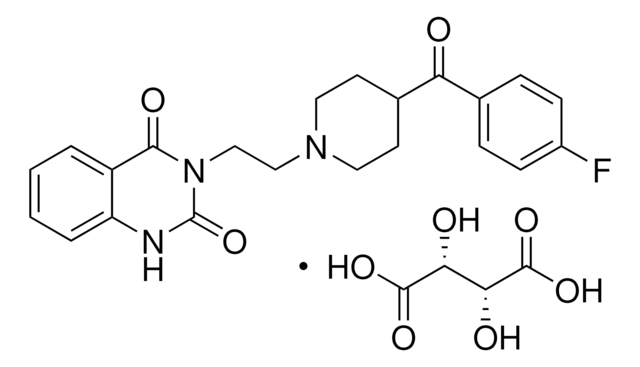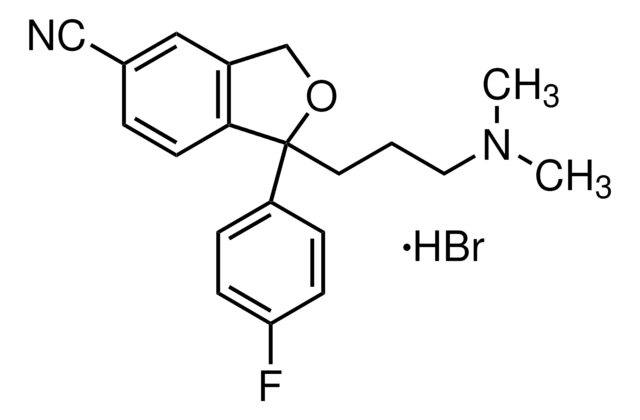Kluczowe dokumenty
1279804
USP
Fluoxetine hydrochloride
United States Pharmacopeia (USP) Reference Standard
Synonim(y):
(±)-N-Methyl-γ-[4-(trifluoromethyl)phenoxy]benzenepropanamine hydrochloride, LY-110,140 hydrochloride, Prozac®
About This Item
Polecane produkty
klasa czystości
pharmaceutical primary standard
rodzina API
fluoxetine
producent / nazwa handlowa
USP
Zastosowanie
pharmaceutical (small molecule)
Format
neat
ciąg SMILES
CNCCC(C1=CC=CC=C1)OC2=CC=C(C(F)(F)F)C=C2.[H]Cl
InChI
1S/C17H18F3NO.ClH/c1-21-12-11-16(13-5-3-2-4-6-13)22-15-9-7-14(8-10-15)17(18,19)20;/h2-10,16,21H,11-12H2,1H3;1H
Klucz InChI
GIYXAJPCNFJEHY-UHFFFAOYSA-N
informacje o genach
human ... SLC6A4(6532)
Szukasz podobnych produktów? Odwiedź Przewodnik dotyczący porównywania produktów
Zastosowanie
- Fluoxetine Tablets
- Fluoksetyna kapsułki o opóźnionym uwalnianiu
- Kapsułki olanzapiny i fluoksetyny
- Fluoksetyna roztwór doustny
- Kapsułki fluoksetyny
Działania biochem./fizjol.
Komentarz do analizy
Inne uwagi
Informacje prawne
produkt powiązany
Hasło ostrzegawcze
Danger
Zwroty wskazujące rodzaj zagrożenia
Zwroty wskazujące środki ostrożności
Klasyfikacja zagrożeń
Acute Tox. 4 Oral - Aquatic Acute 1 - Aquatic Chronic 1 - Eye Dam. 1 - STOT RE 2 - STOT SE 3
Organy docelowe
Central nervous system
Kod klasy składowania
11 - Combustible Solids
Klasa zagrożenia wodnego (WGK)
WGK 3
Temperatura zapłonu (°F)
Not applicable
Temperatura zapłonu (°C)
Not applicable
Wybierz jedną z najnowszych wersji:
Certyfikaty analizy (CoA)
It looks like we've run into a problem, but you can still download Certificates of Analysis from our Dokumenty section.
Proszę o kontakt, jeśli potrzebna jest pomoc Obsługa Klienta
Masz już ten produkt?
Dokumenty związane z niedawno zakupionymi produktami zostały zamieszczone w Bibliotece dokumentów.
Klienci oglądali również te produkty
Nasz zespół naukowców ma doświadczenie we wszystkich obszarach badań, w tym w naukach przyrodniczych, materiałoznawstwie, syntezie chemicznej, chromatografii, analityce i wielu innych dziedzinach.
Skontaktuj się z zespołem ds. pomocy technicznej